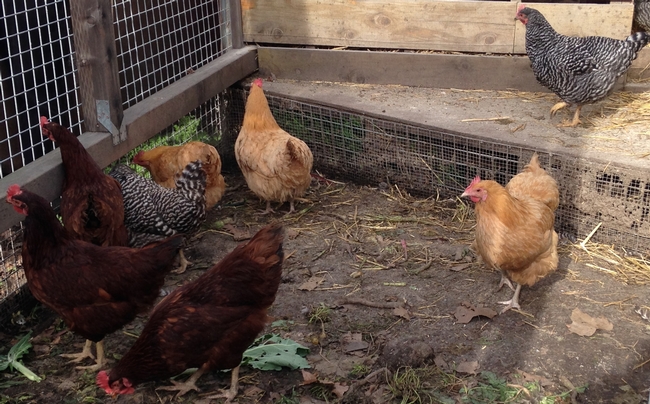
Posts Tagged: Veterinary Medicine
Veterinarians Registering Now for UC Davis-OSU Honey Bee Health Course
If you're a veterinarian or a veterinary technician in California or Oregon, then you'll want to...
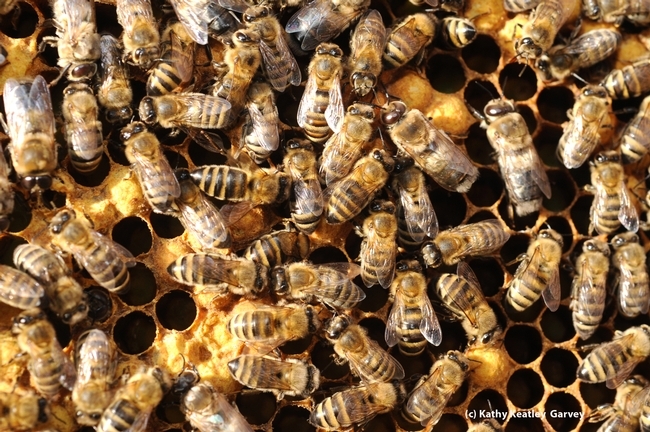
Inside a hive. (Photo by Kathy Keatley Garvey)
UC helps California dairy farmers experiment with milking robots
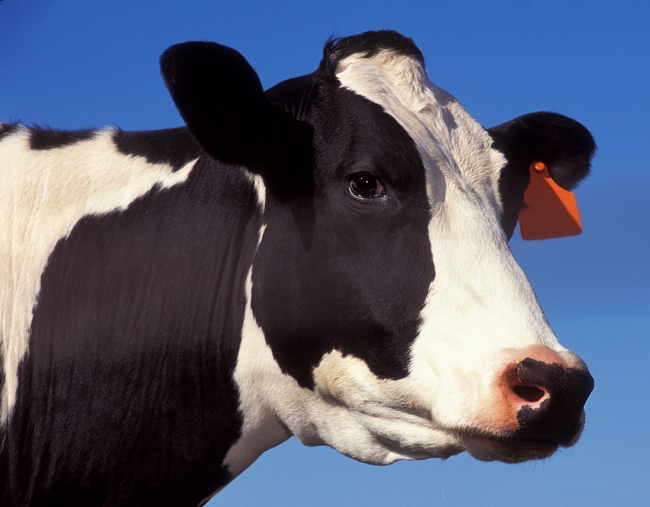
The technological developments were critical to the formation of California's enormous dairy industry, the largest in the nation. Today, more than 1.7 million cows produce 39.8 billion pounds of milk in California each year, according to the California Milk Advisory Board.
The march of progress continues. The state's dairy industry is now beginning to integrate robots and sophisticated computer software into cow barns to maintain the supply of wholesome and inexpensive dairy foods for Americans. UC Cooperative Extension scientists are poised to help them adapt to the new technologies.
On most California dairies, cows are led two or three times each day from the barn to the milking parlor by workers. They clean the cows' udders to remove bacteria and surface dirt, evaluate whether the cow has mastitis, attach the milking machines, and disinfect the cow's teats after milking before taking the cows back to their pens.
“Dairy production is automated, but it is still a very labor intensive activity,” said Fernanda Ferreira, UC Cooperative Extension dairy specialist based at the UC Veterinary Medicine Teaching and Research Center in Tulare. “Farmers always tell us that the most challenging thing they are facing is labor – labor availability, training and cost.”
Milking robots – a technology already being used in dairies in the Midwest and Eastern U.S., Europe, South America and Canada – promises greater automation, reduced labor needs and improved animal welfare.
View a short video clip of the milking robot in action.
The machines don't resemble a stereotypical robot character, but rather are computerized boxes large enough to fit one cow, with a robot arm programmed to reach under the cow and clamp onto the teats. Cows do not need to be led to the milking machine, but rather walk into the box voluntarily when they are ready to be milked.
The machine recognizes each individual cow by a computer tag around her neck or on the ear, and provides personalized milking service. The robots do all the work: clean the teats, attach the milking machines, and disinfect the teats after the milking is done. While milking, the robot collects data on the cow's output and health.
When it comes to California and all the West, these are very new,” Ferreira said. “We're talking herds that have 1,800 cows on average. Huge herds. Since each of the robotic units, which serve 60 to 70 cows, costs about $120,000, we're also talking about a huge investment.”
Two San Joaquin Valley dairies have already installed milking robots, and many others are interested in the new technology. Ferreira and other researchers from the VMTRC in Tulare are collaborating with one of them to study how the machine and the herd's management can be adapted to better serve large-scale dairy herds like those in California.
“Our idea is to first understand the perspective of the producers who have cows being milked by robots. We want to know what they have learned so far, the challenges they have encountered, their relationship with banks,” Ferreira said. “Relationships with banks are important because most dairies will need to borrow funds to equip their facilities with enough robots for full automation.”
Future research will review issues of milk quality, mastitis management and determine what data farmers will need from the computerized system to improve dairy profitability.
“There are a lot of options available from companies that manufacture the robots. We want to fully understand how they work for our farmers and cows to be able to inform the future of California's dairy industry,” Ferreira said.
'Beekeeping and Management' Part of UC Davis Veterinary Medicine's Winter Conference
Mark your calendar! "Beekeeping and Management" will be part of the two-day UC Davis School of...
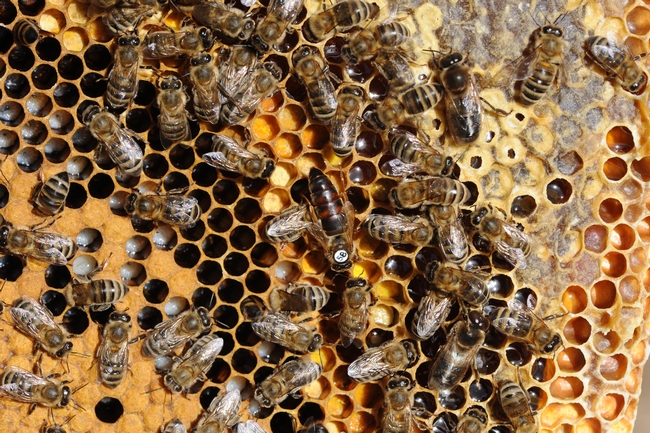
A honey bee colony at work. Extension apiculturist Elina Niño will discuss three topics dealing with "Beekeeping and Management" at the UC Davis School of Veterinary Medicine's 2019 winter conference. (Photo by Kathy Keatley Garvey)
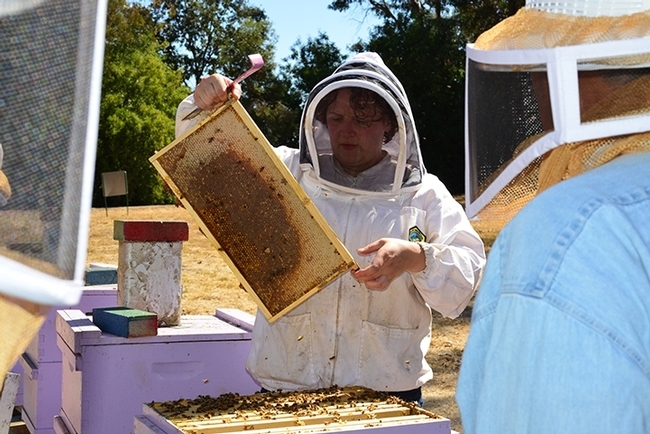
Extension apiculturist Elina Lastro Niño opening a hive at the Harry H. Laidlaw Jr. Honey Bee Research Facility, UC Davis. (Photo by Kathy Keatley Garvey)
Zeroing in on the Zika Virus
If you're interested in Zika virus research, you'll want to attend Lark Coffey's seminar on...
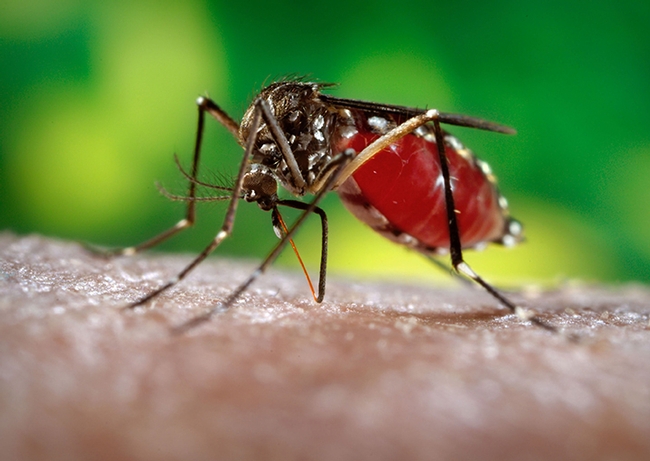
This mosquito, Aedes aegypti (infected mosqutoes can transmit such diseases as dengue and the Zika virus) will be the focus of Lark Coffey's seminar at 4:10 p.m., Wednesday, Nov. 7 in 122 Briggs Hall, UC Davis. (Photo by James Gathany, Centers for Disease Control)
Backyard poultry enthusiasts invited to participate in UC research survey
Californians who raise backyard poultry are invited to participate in a study to help the University of California more effectively deliver poultry health information, especially to prevent the spread of poultry diseases.
The UC Davis School of Veterinary Medicine and UC Davis Veterinary Medicine Cooperative Extension are conducting a research study consisting of a voluntary survey designed specifically for backyard poultry owners in California.
“Our goal is to better understand how backyard poultry enthusiasts communicate with each other in California and to design and execute effective and efficient backyard poultry outreach programs,” said Maurice Pitesky, UC Cooperative Extension poultry specialist with the UC Davis School of Veterinary Medicine. “To do this, we are sending out a short survey to help us understand the ‘structure' of the backyard poultry network."

For example, if the researchers know which counties have a large number of birds traveling in and out, then they can focus outreach resources, such as biosecurity workshops, in those higher-risk counties. In addition, the information will guide UC scientists to plan custom workshops depending on the needs of poultry owners in specific counties.
“Please note we are a university not a regulatory agency and therefore our focus is on outreach and education, not regulation and enforcement,” Pitesky said.
If you would like to participate in this voluntary study, please fill out the California Backyard Poultry Survey at http://ucanr.edu/sites/poultry/CA_Backyard_Poultry_Survey by June 1, 2017.
If you have any questions or comments, please contact UC Cooperative Extension specialist Pitesky at mepitesky@ucdavis.edu or his research associate Myrna Cadena at mmcadena@ucdavis.edu.

